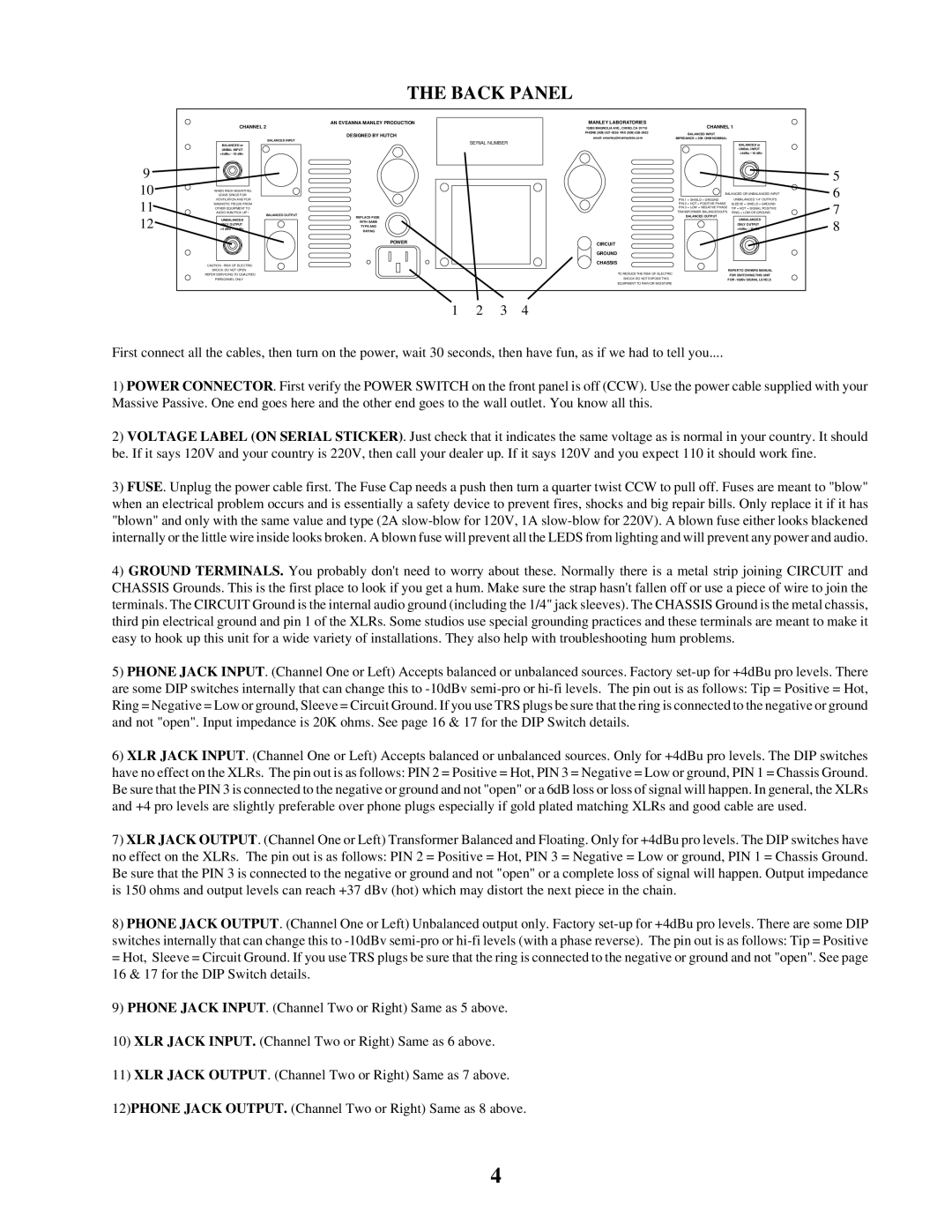Manley Massive Passive Stereo Tube Equalizer specifications
The Manley Massive Passive Stereo Tube Equalizer stands as a hallmark in the world of high-end audio processing, renowned for its unique design and exceptional sound character. This equalizer embodies the brand's commitment to quality and sonic integrity, making it a coveted piece of equipment for professional audio engineers and enthusiasts alike.One of the standout features of the Massive Passive is its all-tube signal path. Utilizing vacuum tubes, the equalizer imparts a warm, rich tone that is often described as “musical”. This tube-based design works in conjunction with a passive equalization topology, which means that rather than boosting frequencies through active components, it relies on a network of inductors and capacitors, preserving the audio signal's purity while allowing for versatile tone shaping.
The Massive Passive is equipped with a wide range of frequency bands, allowing engineers to tailor their sound precisely. It features a dual-channel configuration with controls for both left and right channels, enabling stereo adjustments that maintain phase coherence. Each channel includes numerous frequency selections across both low and high ranges, granting access to numerous filtering options that highlight or attenuate specific frequencies as required.
An essential aspect of the Massive Passive is its innovative design, characterized by high-quality components, including Manley’s custom-designed transformers and circuit boards. These components are engineered to minimize noise and distortion, ensuring that the equalization process does not compromise the integrity of the source material. Users can enjoy the convenience of both low-frequency and high-frequency adjustments, as well as the ability to boost or cut with a substantial range, from a subtle touch to significant alterations.
One of the intelligent aspects of the Massive Passive is its 'bypass' feature. This allows users to seamlessly compare the processed sound against the original audio, making it easier to make informed decisions on adjustments. The build quality of the unit is also remarkable, showcasing a robust chassis that is both aesthetically pleasing and incredibly durable, signifying Manley Labs’ attention to detail.
Ultimately, the Manley Massive Passive Stereo Tube Equalizer encapsulates the essence of analog warmth and precision in audio processing. By integrating sophisticated engineering with user-friendly controls, it provides both professional and home studios with the tools necessary to achieve that sought-after sonic richness, making it a top choice among discerning audio professionals.

